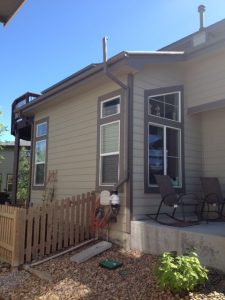
13 Feb Educational Radon Activities for Students
 Even though radon awareness month has passed, it’s still a great time of year to educate your families about radon. What are some educational radon activities for students and kids? While the activities you choose will vary based on age or grade level, just taking steps to make your kid radon savvy is a great move on your part, as a parent or an educator. The EPA has provided a useful list of educational radon activities, geared mainly toward middle school-aged kids. Consider adopting some of these activities for younger and older grade levels, though, and you’ll be equipped with some great radon educational activities for your class.
Even though radon awareness month has passed, it’s still a great time of year to educate your families about radon. What are some educational radon activities for students and kids? While the activities you choose will vary based on age or grade level, just taking steps to make your kid radon savvy is a great move on your part, as a parent or an educator. The EPA has provided a useful list of educational radon activities, geared mainly toward middle school-aged kids. Consider adopting some of these activities for younger and older grade levels, though, and you’ll be equipped with some great radon educational activities for your class.
Poster Contest
Back in 2011, the EPA posted about the Radon Kids on their blog. Two young kids, aged 10 and 11, worked to start a grassroots movement called RAP (Radon Awareness Project) that would operate in conjunction with Colorado city officials in order to increase awareness of radon in schools. The two young founders also created a radon awareness poster, and we think this is a great way to do something creative, fun, and informative with your kids. Have them work in groups to design posters and challenge them to include at least a few facts in order to help them improve their radon knowledge.
Spelling and Vocabulary
 One huge part of becoming radon aware is understanding the vocabulary. Put together a vocabulary list appropriate for your age group (e.g. “poison,” “gas,” and “radon” might be best for younger groups, but “Uranium,” “radioactive decay,” and “atom” might be better for older age groups. Just having students learn to spell and define the words provides an excellent foundation.
One huge part of becoming radon aware is understanding the vocabulary. Put together a vocabulary list appropriate for your age group (e.g. “poison,” “gas,” and “radon” might be best for younger groups, but “Uranium,” “radioactive decay,” and “atom” might be better for older age groups. Just having students learn to spell and define the words provides an excellent foundation.
Experiments
The EPA has some awesome ideas for simple experiments students can do in order to understand how radon gas actually works. One idea is to have students think about why some homes have higher radon levels than others. While they come up with ideas, distribute varying soil samples. The idea is that soil that is more permeable (larger chunks of rock or gravel) allows more radon to escape when compared to clay or slate. Help your students brainstorm different ideas and get their brain juices flowing.
Map Coloring
Print out a map of the united states and have students color it according to radon levels in the soil. This will bring awareness of the soil composition in their home state. They’ll quickly see that Colorado and other areas in the northern United States have the highest levels of radon in the soil.

No Comments